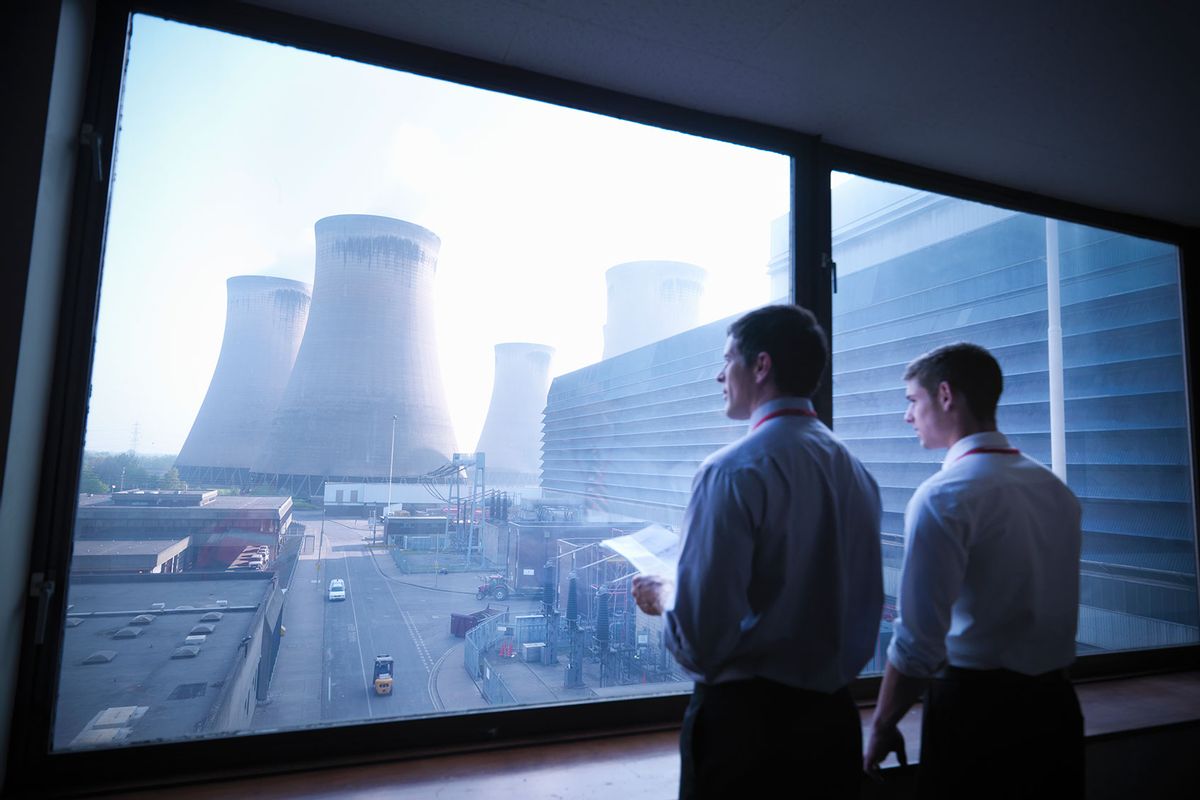As the climate crisis grows worse every year, alternative energy options are increasingly important. Much recent debate has focused on nuclear energy, which has an understandably troubled reputation after the disasters at Chernobyl, Three Mile Island and Fukushima, and is further tarnished by its association with the devastating potential of nuclear weapons. Nuclear energy is definitely "cleaner" than fossil fuels in terms of carbon emissions, but most experts Salon contacted were skeptical that it can offer a path to climate salvation.
Some climate activists "promote nuclear power as a possibility to battle climate change," said Nikolaus Muellner, a professor of safety and risk sciences at the University of Natural Resources and Life Sciences in Vienna. while others are eager "to avoid the risks associated with nuclear power."
M.V. Ramana, a physicist at the University of British Columbia’s School of Public Policy and Global Affairs and author of the upcoming book "Nuclear Is Not the Solution: The Folly of Atomic Power in the Age of Climate Change," made clear in an email response to Salon that he falls into the latter camp. "If one evaluates nuclear energy as a way to deal with climate change," Ramana said, it actually plays "a negative role in reducing emissions."
There are two reasons for that, he continued: "First, the money invested in nuclear energy — even in the case of keeping old and possibly dangerous plants operational — would save far more carbon dioxide if it were invested in renewables and associated technologies." So he sees "an economic opportunity cost to investing in nuclear energy." Furthermore, building new nuclear reactors can take years or decades, compounding the opportunity cost, because "the reduction in emissions from alternative investments would not only be greater, but also quicker."
Ramana also cited the "variety of risks and environmental impacts" associated with nuclear energy, including catastrophic accidents, the fact that fuel for nuclear power can be diverted to weapons programs, and the production of radioactive waste, which can remain hazardous to human health for thousands of years.
"Because of the inevitable production of long-lived radioactive wastes, nuclear power cannot be defined as sustainable," Ramana said. As for accidents, he believes they are "inevitable ... even with newer reactor designs," and that the risk "is far higher than proponents of nuclear power admit."
Want more health and science stories in your inbox? Subscribe to Salon's weekly newsletter Lab Notes.
Also responding by email, Muellner offered a more nuanced and technical view, focusing on the much lower "calculated emission costs" of nuclear power generation compared to electricity generated with fossil fuels. Emissions over the life cycle of a nuclear plant, he said, "are of the same order of magnitude as life cycle emissions from renewable generated electricity."
Still, Muellner did not deny that the environmental downsides are significant. "Nuclear power plants generate power by splitting uranium atoms — or, more precisely, nuclei — and the fragments of the split uranium are highly radioactive" and generate heat, he explained. In a severe accident such as the infamous Chernobyl disaster, that intense heat and radioactivity could "destroy the barriers that are designed to contain those fission products, the fission products could be released and large areas of land could become inhabitable." Storing those dangerous fusion products, potentially for millennia into the future, ":is a highly challenging task."
Nuclear accidents are "inevitable ... even with newer reactor designs," and the risk "is far higher than proponents of nuclear power admit."
Benjamin K. Sovacool, director of the Institute for Global Sustainability at Boston University, sounded a similar note of caution, warning that "nuclear power has high future costs, made more expensive by accidents" and that the nuclear industry "still doesn’t have a solution to its waste problem." Because the process of nuclear fission does not burn or oxidize anything, nearly all the fuel used in producing energy at nuclear plants becomes waste without reducing its mass.
"Typically, a single nuclear reactor will consume an average of 32,000 fuel rods over the course of its lifetime, and will also produce 20 to 30 tons of spent nuclear fuel per year," Sovacool told Salon. That equates to "about 2,200 metric tons annually for the entire U.S. nuclear fleet, and almost 10,000 metric tons of high-level spent nuclear fuel" around the world. Most of that waste, he observed, is not reprocessed, and ends up stored on site at nuclear power plants, "because no community wishes to host long-term nuclear storage facilities." Finding a final resting site for all that nuclear waste is "a pernicious problem in search of a solution," and plans to build a permanent underground storage repository at Yucca Mountain, Nevada, "have been indefinitely suspended."
It's no surprise that states, regions or communities are less than eager to host nuclear waste storage facilities, Sovacool noted. "The nuclear fuel cycle involves some of the most hazardous elements known to humankind, including more than 100 dangerous radionuclides and carcinogens," he said. "These are the same toxins found in the fallout from nuclear weapons."
Finally, there are the security risks of nuclear energy, also mentioned by Ramana. Several countries "have tried or succeeded in developing nuclear weapons under the guise of civilian nuclear weapons programs," Sovacool said, quoting Nobel-winning physicist Hannes Alfven's observation that "Atoms for peace and atoms for war are Siamese twins." The four world nations with the largest nuclear reprocessing capacity, said Sovacool — those being Belgium, France, Germany and the U.K. — "have acknowledged that they possess at least 190 tons of separated plutonium," enough material to manufacture more than 20,000 nuclear weapons.
"If we double the number of nuclear reactors worldwide," Sovacool said, "we double the possibility that countries without nuclear weapons might obtain them. No other energy system has such an acute link to weapons of mass destruction."



Shares